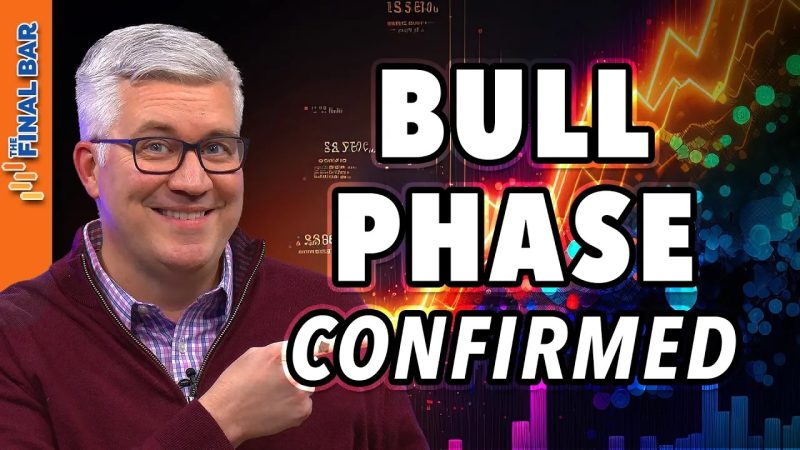Body:
Understanding the intricate dynamics of the stock market might seem like an overwhelming task. Market experts decode these dynamics using numerous theories and metrics. Among those is one crucial theory that has remained significant over the century: The Dow Theory. This document aims to provide an insight into how the New Dow Theory confirms the current BULL phase in the financial markets.
First and foremost, let’s comprehend what the Dow Theory is. This fascinating concept stems from Charles Dow’s collective writings, co-founder of the Wall Street Journal and the Dow Jones Industrial Average. Essentially, Dow Theory purports to identify market trends by studying price action. According to this theory, there are three types of market trends: primary, secondary, and minor, each serving a definitive role in the analysis.
The New Dow Theory, an extended version of the original theory, adds more layers to these dynamics while confirming the stock market’s bullish phase. It incorporates factors like investor sentiment, market momentum, and macro-economic indicators.
In a bullish phase, the market is dominated by purchasers who believe that the market will continue to expand and thus lead to significant activity. The New Dow Theory’s analysis can detect this phase, and several signs are indicative of this fact.
Firstly, under the New Dow Theory, both the Dow Jones Industrial Average (DJIA) and the Dow Jones Transport Average (DJT) are surging side by side is a clear indication we’re in a bull market. This correlation suggests widespread market optimism as a result of economic recovery, lower unemployment rates, or a surge in consumer spending.
Secondly, the volume of transactions also plays a crucial role in confirming a bullish trend as per the New Dow Theory. During the bullish phase, high transaction volume typically accompanies rising prices. This surge in volume indicates increasing investor confidence and willingness to invest, further propelling the market’s upward journey.
The New Dow Theory also considers market corrections, a temporary drop in stock prices after a significant increase, as a common feature in a bull phase. Although this might hint at a bear phase’s advent, in the context of the New Dow Theory, it merely represents a minor trend within the primary upward or bullish trend.
On top of these, the prolonged market rallies are also affirmation of a bullish market according to New Dow Theory. Stages where the market continually reaches and exceeds previous highs point towards undeterred market optimism and investor confidence, thereby confirming a bullish phase.
In the end, the New Dow Theory lends a comprehensive toolset to investors for recognizing and confirming a bull phase, thereby facilitating informed decision-making. However, like any financial theory or model, it’s not foolproof. Investors should consider other economic indicators and market dynamics before investing. Nevertheless, the ongoing correlation between the DJIA and the DJT, high transaction volume, the ability to endure price corrections, and prolonged market rallies all align with the New Dow Theory’s indicators of a bullish phase. Thus, based on current market indicators, the New Dow Theory confirms that we are indeed in a ‘bull’ phase.




